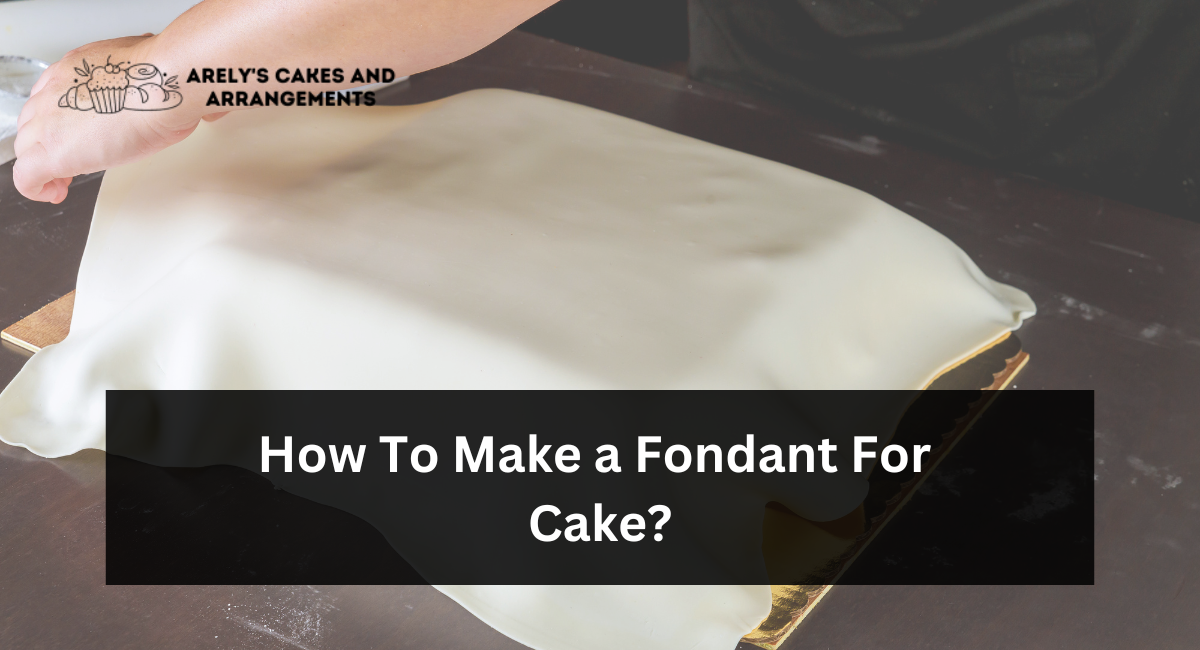Fondant is a sugar-based icing that can be tinted any color to match any decor theme while sealing in moisture to keep cakes looking moist and fresh.
Roll the fondant out bigger than you need; it is easier to re-roll than try to fix any tears or rips that occur.
If the fondant is too dry, add some glycerin and shortening/vanaspati to make it more malleable and avoid elephant skin issues.
This should also help minimize elephant skin concerns.
Mixing
Set four cups of confectioners sugar aside in a large bowl. Form a well in the center and, using a wooden spoon, stir in lukewarm gelatin mixture.
Gradually incorporate more sugar until all stickiness has vanished. Knead fondant until smooth and nonsticky before adding additional drops of either water or sugar (one at a time) as needed to adjust texture or elasticity.
Add food coloring and flavor extracts to your fondant for additional customization if desired. Just be careful not to overdo it, as too much color can cause the fondant to dry quickly and become difficult to work with. When adding color, do so before kneading and rolling out.
To prevent fondant from drying out, wrap it in plastic and store it in an airtight container in the refrigerator until ready for use.
Before decorating again, warm and knead the fondant until soft; this prevents tears while increasing its elasticity.
One way to ensure that your fondant is flexible enough to roll out is to hydrate it by spraying it with water and then kneading it with vegetable shortening – this hydrates it, allowing it to stretch without creating an elephant skin effect.
Kneading
While mixing, use either your hands or a stand mixer to knead fondant into a soft and flexible consistency. Wear gloves while handling fondant as it can become quite sticky.
Additionally, this helps prevent color staining your fingers. If using multiple colors simultaneously, divide the fondant into separate sections before kneading each separately.
If the fondant is too hard, add more sugar gradually; if it is too soft, use water to firm it firmly. If it remains stiff or dry without any elasticity or bounces back after repeated mixings, incorporates vegetable shortening (vanaspathi).
Glycerin can also help your fondant stand out by acting as a humectant, which draws moisture out of the air to keep the fondant moist and prevent elephant skin.
This will improve texture while helping avoid its formation.
Once your fondant is completed, wrap it in plastic wrap and store it in a cool location. It should be kept for approximately two days; just remember to knead and roll again before every use.
It can last several months in the freezer if stored well wrapped; to avoid cracking and crocodile skin in your finished cake design, use icing sugar instead of corn flour when dusting your work surface.
Rolling
Fondant is an edible sugar dough to decorate cakes and other baked goods. Its flexible form makes it possible to mold various shapes to form detailed designs on cakes or roll it thin to cover entire surface areas of cakes.
Fondant decoration methods have become incredibly popular due to giving cakes a professional look seen on competitive baking shows.
Fondant making is relatively straightforward. Mix gelatin and water, then combine with powdered sugar until completely mixed.
Finally, knead the fondant by hand (or with a mixer fitted with a dough hook) until it becomes smooth and pliable.
Add food coloring at this stage if desired; gel food coloring provides less moisture-retaining color options than liquid.
Once the fondant is malleable, roll it into a ball and dust your work area with powdered sugar or cornstarch to prevent sticking.
Store any unused fondant in an airtight container in the fridge; just be sure it remains covered so it doesn’t dry out too quickly. Additionally, it may be kept frozen if it won’t be used immediately.
Decorating
The fondant should be thoroughly kneaded until smooth, making rolling easier. After being packaged up and stored properly in an airtight container, fondant may be kept for several weeks without going bad.
Before beginning to roll fondant, it is advisable to lightly dust a surface with cornstarch or powdered sugar to reduce sticking.
Coat your hands in solid vegetable shortening or use disposable food-grade gloves; this step is especially crucial if coloring fondant – this will prevent color staining your hands or rubbing off onto other surfaces, such as your work table.
If you want to add color to your fondant, now is an ideal time. Coloring can be added directly into the warm gelatin mixture before mixing with sugar.
Also, now, glycerine or tylose powder humectants that will keep the fondant soft and flexible should be added.
As part of your fondant creation process, knead in any flavorings of your choice – but be wary not to overdo it, as too many spices could quickly overwhelm it! Use concentrated gel food coloring rather than liquid for optimal results, as the latter may stain the fondant more quickly than its predecessor.
Conclusion:
As we wrap up our sweet journey into the art of cake decorating, mastering the skill of making fondant has proven to be a game-changer.
Crafting your fondant opens up a world of creative possibilities, allowing you to personalize and elevate your cakes to new heights.
From weddings to birthdays, homemade fondant’s smooth, pliable texture adds a professional touch to your confectionery creations.
Armed with the knowledge of how to make fondant from scratch, you’re now ready to turn any cake into a masterpiece that tastes delightful and looks stunning.
So, roll up your sleeves, grab your rolling pin, and let your fondant adventures begin!
